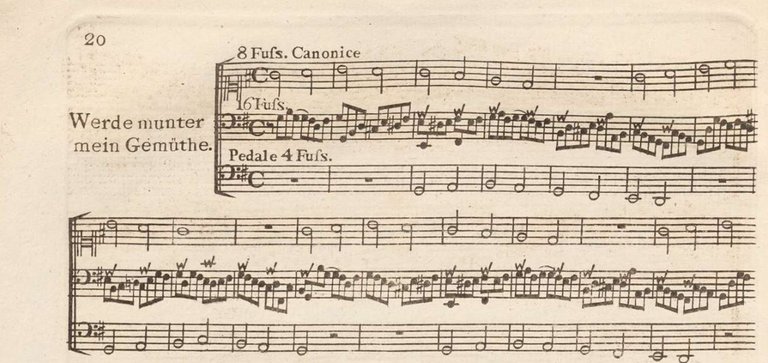The melody of "Werde munter mein Gemüthe" is the same as the melody of "Freu dich sehr o meine Seele". And Marpurg is not the first one who realises that the melody lends itself perfectly for canonic treatment. There is even more than one way to create a canon with this melody. The canon can be started after two notes or after four notes. In his choral prelude Marpurg choses to start the canon after four notes. The other variant can be found, for example in Kirchhoff's prelude to "Freu dich sehr o meine Seele".
Marpurg writes the canon for the right hand and for the pedals with the use of a four feet stop. The left hand plays the bass voice and should be registered with a 16 feet stop. In the second half of the composition Marpurg adds some syncopations and some passing notes, both of which are perfectly reflected in the canon. All in all a nice composition in the most literal sense of the verb compose (to put together).
The recording was done with the Hauptwerk software and the sampleset, made by Sonus Paradisi, of the Schnittger organ in the St. Martini-kerk, Groningen (https://www.sonusparadisi.cz/en/organs/netherlands/groningen-st-martini.html).
Score available here: http://partitura.org/index.php/friedrich-wilhelm-marpurg-werde-munter-mein-gemuthe
